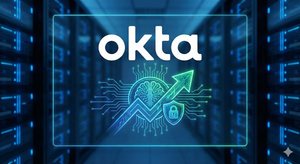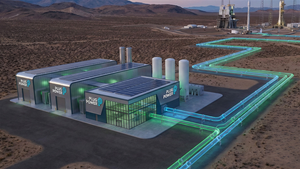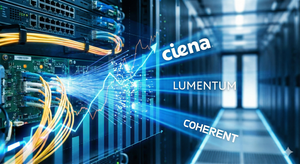
The metals and mining sector has emerged as a critical pillar for portfolio diversification in a volatile global economy, offering investors a robust hedge against inflation, a reliable safe haven during crises, and a low correlation with traditional asset classes. As of October 2025, market sentiment is overwhelmingly bullish, driven by a complex interplay of geopolitical tensions, anticipated shifts in monetary policy, and surging demand for critical minerals vital to the global energy transition. This confluence of factors has not only propelled precious metals to unprecedented highs but also underscored the strategic importance of industrial metals in shaping future economic landscapes.
Indeed, the immediate implications are evident in the spectacular performance of gold and silver, with gold breaching the $4,000 per ounce mark and silver soaring past $50 per ounce, significantly outperforming other asset classes year-to-date. This rally is fueled by renewed US-China trade hostilities, expectations of U.S. Federal Reserve interest rate cuts, and persistent core inflation. Simultaneously, the accelerating demand for copper, lithium, and rare earths, driven by the electric vehicle and renewable energy revolution, is creating a supply deficit that promises sustained growth and opportunities within the industrial metals segment. Investors are thus keenly re-evaluating their exposure to this sector, recognizing its potential to stabilize and enhance portfolio returns in an unpredictable market environment.
Essential Portfolio Diversification Strategies in Metals and Mining
The strategic deployment of capital across the diverse metals and mining landscape is paramount for investors seeking robust portfolio diversification. This involves a nuanced approach that considers the unique characteristics of various metal types, the optimal investment vehicles, and critical geographic considerations. By carefully constructing a portfolio that balances exposure to precious metals, industrial metals, and battery metals, investors can hedge against different economic cycles and geopolitical risks. For instance, precious metals like gold and silver traditionally serve as inflation hedges and safe havens during economic downturns, offering stability when other asset classes falter. Gold (NYSE: GLD) has historically demonstrated a negative correlation with equities during periods of market stress, while silver (NYSE: SLV), with its dual industrial and monetary role, can offer higher volatility but also significant upside during industrial growth phases. Platinum (NYSE: PTM) is gaining prominence not only for its role in automotive catalytic converters but also for its increasing importance in the nascent hydrogen economy, showcasing its evolving industrial demand drivers.
Beyond precious metals, a diversified metals portfolio must also strategically incorporate industrial and battery metals, which are intrinsically linked to global economic growth and the accelerating energy transition. Industrial metals such as copper (NYSE: CMX), often dubbed "Dr. Copper" for its economic predictive power, are essential for electrical applications, renewable energy infrastructure, and electric vehicles (EVs), thriving during periods of economic expansion. Nickel (NYSE: JJN) is critical for stainless steel production and high-density EV batteries, with its demand projected for substantial growth. Zinc (NYSE: ZINC) plays a vital role in galvanizing and other industrial applications, protecting steel from corrosion. The burgeoning demand for energy storage solutions has also elevated battery metals like lithium (NASDAQ: LIT) and cobalt (NYSE: GLNCY) to critical status. Lithium, essential for lithium-ion batteries, faces potential supply constraints despite rapid demand growth from EVs, while cobalt, used to enhance battery stability, is highly concentrated in politically sensitive regions, necessitating careful supply chain management. Diversifying across these metal types allows investors to capture upside from secular growth trends while balancing the cyclical nature of individual commodities.
Investors can access the metals and mining sector through various investment vehicles, each offering distinct advantages. Direct ownership of physical metals provides tangible asset backing and security, albeit with storage costs. Investing in mining stocks offers leverage to metal prices and potential dividend income. This can range from major diversified miners like BHP (ASX: BHP) and Rio Tinto (NYSE: RIO), which offer broad commodity exposure and stability, to mid-tier producers focusing on one or two primary metals, and even junior explorers offering high-risk, high-reward opportunities. A particularly attractive option for diversification are royalty and streaming companies, such as Franco-Nevada (NYSE: FNV) or Wheaton Precious Metals (NYSE: WPM), which provide financing to miners in exchange for future production or revenue, offering exposure to metal price upside without direct operational risks and often boasting stronger balance sheets. Furthermore, Exchange-Traded Funds (ETFs) provide convenient, liquid, and diversified access to the sector, tracking indices of mining stocks or physical metal prices, allowing investors to gain exposure to broad metals and mining themes, specific precious or industrial metals, or even niche battery metals.
Geographic diversification is another cornerstone of a robust metals and mining strategy, mitigating risks associated with political instability, regulatory changes, and localized economic downturns. By spreading investments across different regions, investors can reduce the impact of adverse events in any single country and gain exposure to diverse resources. For instance, investing in miners operating in politically stable regions like Australia, Canada, or the United States can balance exposure to higher-risk, higher-reward jurisdictions. Hedging strategies, including options and futures contracts, can further protect against adverse price movements and currency fluctuations, allowing mining companies and investors to lock in prices for future production and manage downside risk. A well-constructed metals and mining portfolio, combining these diversification strategies, not only aims to reduce overall volatility but also to enhance risk-adjusted returns, providing a resilient component within a broader investment framework.
Company Fortunes: Winners and Losers in the Evolving Metals Market
The current seismic shifts in the metals and mining sector are creating clear winners and losers among public companies, with profound implications for their operational strategies, profitability, and stock performance. The dual forces of a surging precious metals market and insatiable demand for critical industrial and battery metals are reshaping corporate fortunes. Companies heavily invested in gold (NYSE: GLD) and silver (NYSE: SLV) are experiencing significant revenue boosts and margin expansion. For instance, major gold producers like Newmont Corporation (NYSE: NEM) and Agnico Eagle Mines Limited (NYSE: AEM) are leveraging their scale to capitalize on gold prices surpassing $4,000 per ounce. Similarly, pure-play silver miners such as First Majestic Silver Corp. (NYSE: AG) and Pan American Silver Corp. (NASDAQ: PAAS) are seeing direct increases in profitability, with First Majestic reporting a 96% year-over-year increase in silver production in Q3 2025. Precious metals streaming companies like Wheaton Precious Metals Corp. (NYSE: WPM) also stand to gain, benefiting from higher metal prices without the associated operational costs, ensuring expanding margins. These companies are poised for continued strong stock performance and have increased capital for exploration and development.
In the realm of critical industrial and battery metals, companies with significant reserves and expansion projects are set to thrive. Copper miners like Freeport-McMoRan (NYSE: FCX) and the diversified giants BHP Group (NYSE: BHP) and Rio Tinto Group (NYSE: RIO) are direct beneficiaries of copper demand projected to surge 70% by 2050, driven by electrification and renewable energy. Even traditionally gold-focused companies, such as Harmony Gold (NYSE: HMY), are strategically diversifying into industrial metals like copper, recognizing the long-term growth potential and reducing their vulnerability to single-commodity price volatility. For battery metals, major lithium producers like Sociedad Química y Minera de Chile (SQM) (NYSE: SQM) and Albemarle Corporation (NYSE: ALB) are well-positioned for the long-term growth in electric vehicles, despite recent price volatility. In the rare earths sector, geopolitical tensions, particularly US-China rivalries, are bolstering companies like MP Materials (NYSE: MP), the only active US rare-earth mine, and Lynas Rare Earths Ltd (ASX: LYC), the only non-Chinese producer of separated heavy rare earths at scale. These companies are seeing significant stock rallies driven by government support for domestic supply chains and increased investment in refining capabilities outside China.
Conversely, companies heavily reliant on single, non-critical commodities face significant headwinds. Miners solely focused on thermal coal, for instance, are increasingly challenged as the industry pivots towards energy transition metals. Industrial users of precious metals are grappling with significantly increased input costs, squeezing profit margins or necessitating price increases for end products. Palladium-focused entities, without diversified Platinum Group Metals (PGM) portfolios, face a challenging long-term outlook due to the shift to EVs and substitution with platinum. Furthermore, companies with high operational costs, those operating in geopolitically unstable regions, or those unable to secure capital for crucial expansion projects will struggle. The demanding capital requirements for new critical mineral projects, coupled with stringent ESG (Environmental, Social, and Governance) performance expectations from investors, mean that companies neglecting sustainability and ethical practices may face reduced investor confidence and higher financing costs, impacting their ability to compete and grow in this evolving market.
A Reshaped Global Landscape: Broader Significance and Implications
The current dynamics in the metals and mining sector extend far beyond individual company balance sheets, signaling a fundamental reshaping of the global economic and geopolitical landscape. These trends are deeply embedded within broader industry shifts, moving away from purely efficiency-driven globalization towards security-oriented regional systems. The demand for critical minerals, fueled by the accelerating energy transition and increased global defense spending, has elevated their production to a matter of national security. Governments worldwide, particularly in Western nations, have committed over $250 billion in the past three years to secure domestic supply chains for these essential resources, illustrating a strategic pivot. This geopolitical competition for critical minerals is increasingly replacing historical rivalries over oil and gas as the defining feature of energy security, with countries vying to reduce their dependence on a few dominant sources, especially China, which currently controls 70-90% of the processing capabilities for many critical minerals. This has led to a fragmented global market characterized by bilateral deals, export restrictions, and strategic stockpiling, creating both opportunities and challenges for competitors and partners across the value chain.
The ripple effects of these trends are far-reaching. While higher metal prices are boosting profitability for miners, allowing for increased investment in exploration and development, downstream industries such as electric vehicle (EV) manufacturing and electronics are facing elevated operational and procurement costs, potentially squeezing their margins. Conversely, equipment manufacturers, technology providers, and logistics companies are seeing increased activity as miners expand operations. The emergence of a "green premium" for lower-carbon metals also hints at a future where sustainable mining practices command higher market value, influencing investment flows and consumer choices. Regulatory and policy implications are equally profound, with governments implementing subsidies, trade restrictions, and stricter environmental and social regulations to secure critical mineral supplies and ensure responsible mining. The long lead times for new mining projects, often exceeding 15 years, combined with complex permitting processes and the need for robust community engagement, present significant hurdles that policy must address to meet future demand.
Historically, the mining industry has experienced numerous boom and bust cycles, often driven by demand shocks from periods of rapid industrialization. The current situation bears some resemblance to past resource booms, where the "security of supply" became a paramount governmental concern. However, the present paradigm is unique due to its inextricable link with climate change and the imperative of the energy transition. Unlike previous booms, which might have focused on coal or iron ore for industrial expansion, the current demand surge is concentrated on a specific suite of "future-facing" metals—lithium, cobalt, nickel, copper, and rare earths—that are indispensable for decarbonization technologies. This shift introduces new geopolitical complexities, as the concentration of processing capabilities in a few nations creates vulnerabilities and intensifies competition. The drive for supply chain resilience, through diversification, localization, and strategic stockpiling, is a direct response to these vulnerabilities, aiming to mitigate the risks of geopolitical disruptions and ensure a stable supply for the green economy.
The Road Ahead: Navigating Future Opportunities and Challenges
The metals and mining sector stands at a critical juncture, facing both unprecedented opportunities and significant challenges that will define its trajectory in the short and long term. In the immediate future (1-3 years), strong demand for critical minerals, driven by the energy transition, is expected to keep prices robust for commodities like copper (NYSE: CMX), lithium (NASDAQ: LIT), and rare earths. Silver (NYSE: SLV) is also poised for continued strength due to its dual industrial and investment roles, while gold (NYSE: GLD) may maintain its safe-haven appeal amidst persistent economic uncertainties and geopolitical tensions. However, this period will also see continued price volatility for some battery metals, and miners will grapple with declining ore grades and increasing extraction costs, necessitating higher commodity prices to maintain economic viability. Companies will need to prioritize operational efficiency, capital discipline, and strategic mergers and acquisitions to mitigate risks and accelerate growth, alongside immediate adoption of digital innovations like remote operating centers to improve productivity and reduce carbon footprints.
Looking further ahead (3+ years), the long-term outlook is shaped by fundamental shifts in global energy systems and a deepening commitment to circularity. The demand for critical minerals is projected to rise exponentially, with some minerals seeing a nearly 500% increase by 2050. This necessitates a strategic pivot towards building more diverse and resilient critical mineral supply chains, requiring substantial public and private sector investments. Technological advancements, particularly in AI and automation, are expected to revolutionize mining operations, potentially leading to fully automated, "man-less" mines that enhance safety, efficiency, and environmental impact. Sustainable practices will transition from a trend to a core principle, with companies aiming for net-zero emissions, adopting "nature positive" initiatives, and embracing the circular economy by focusing on waste reduction, reuse, and recycling. The industry will need to mine more mineral ores in the next 30 years than in the past 70,000, underscoring the immense challenge and the critical importance of technological innovation and responsible sourcing.
For investors, these trends present a spectrum of potential scenarios. A bullish outcome envisions companies aggressively pivoting towards critical minerals, investing in sustainable practices, and adopting advanced technologies, leading to significant returns for investors in "transition metals" and strong ESG performers. Gold and silver would continue to act as strong hedges, providing stability. Conversely, a bearish scenario could see companies failing to adapt to sustainability demands or manage geopolitical risks, resulting in underperformance and increased volatility. A "middle ground" scenario suggests an uneven transition, where some companies adapt successfully while others lag, creating opportunities for discerning investors who conduct careful due diligence and favor companies with clear ESG roadmaps and resilient supply chain strategies. Ultimately, success will hinge on the industry's ability to strategically adapt through technological innovation, embrace genuine sustainable practices, and navigate complex geopolitical shifts, demanding a forward-looking and adaptable approach from all stakeholders.
The Enduring Value: A Comprehensive Wrap-Up
In conclusion, the metals and mining sector has solidified its position as an indispensable component for robust portfolio diversification, offering a unique blend of inflation hedging, safe-haven characteristics, and low correlation with traditional asset classes. The current market, as of October 2025, is characterized by a bullish sentiment, driven by unprecedented highs in precious metals like gold (NYSE: GLD) and silver (NYSE: SLV), coupled with soaring demand for critical industrial and battery metals essential for the global energy transition. Key takeaways for investors include the strategic importance of diversifying across different metal types—from counter-cyclical precious metals to pro-cyclical industrial metals—and utilizing a mix of investment vehicles, including physical metals, mining stocks, and ETFs. Geographic diversification and a strong emphasis on ESG (Environmental, Social, and Governance) performance are also paramount for mitigating risks and ensuring long-term sustainability.
Moving forward, the metals and mining market is poised for continued strategic importance, driven by the insatiable demand from the energy transition and persistent supply constraints. While precious metals are expected to maintain their bullish momentum amidst ongoing macroeconomic uncertainties and central bank activities, the long-term growth trajectory for critical minerals like copper (NYSE: CMX), lithium (NASDAQ: LIT), and rare earths remains exceptionally strong. However, investors must remain vigilant to potential price volatility in battery metals, the challenges of declining ore grades, and the long lead times for new mine development. The industry's ability to innovate technologically, embrace sustainable practices, and navigate complex geopolitical shifts will be crucial in shaping future outcomes and determining which companies thrive.
The lasting impact of these trends underscores the foundational role of metals and mining in underpinning industrial development, technological advancement, and the transition to a low-carbon future. Its products are not merely commodities but strategic assets indispensable for modern society. For investors, the coming months will require close monitoring of global inflation figures, interest rate policies, energy transition developments, and supply-side dynamics. Prioritizing companies with strong ESG commitments and innovative technologies will be key. While the sector can be volatile, a disciplined approach to diversification and a keen eye on evolving market and geopolitical landscapes will enable investors to capture the significant opportunities presented by this indispensable industry.
This content is intended for informational purposes only and is not financial advice





